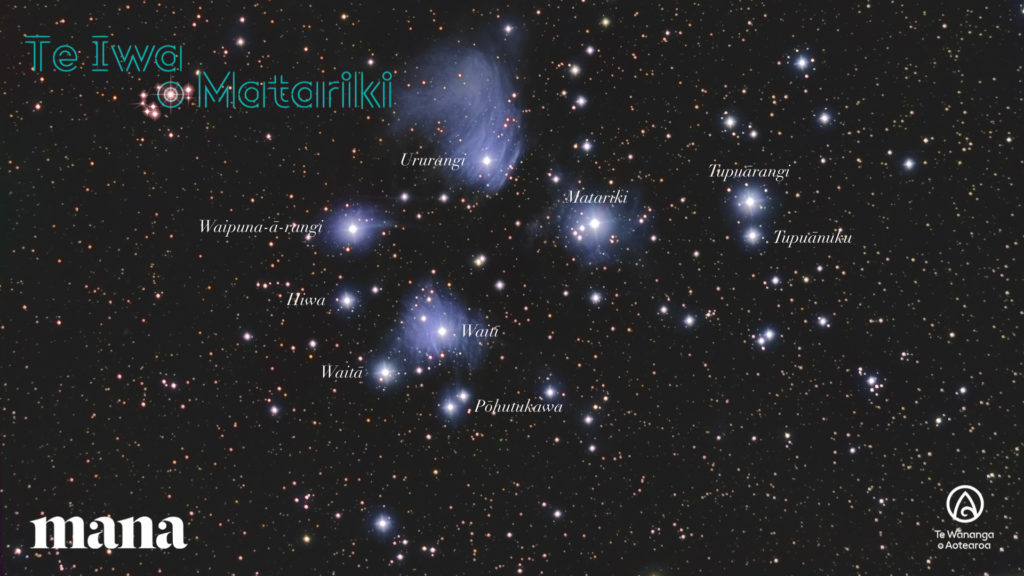On 23 June 2017 the Institute attended a free public presentation at Te Papa Tongarewa about Matariki and Māori astronomy by Dr Rangi Matamua (Tūhoe). Dr Matamua is an associate professor at the University of Waikato and author of Matariki: The Star of the Year. His research fields are Māori astronomy and star lore, Māori culture, and Māori language development, research and revitalisation.
about Matariki and Māori astronomy by Dr Rangi Matamua (Tūhoe). Dr Matamua is an associate professor at the University of Waikato and author of Matariki: The Star of the Year. His research fields are Māori astronomy and star lore, Māori culture, and Māori language development, research and revitalisation.
The Institute was particularly interested in this presentation because we are exploring themes of navigation and astronomy for an upcoming workshop we are hosting in collaboration with New Zealand Treasury. The workshop aims to explore preferred futures for a post-Treaty settlement New Zealand and will be held from Monday, 20 November 2017 to Wednesday, 22 November 2017. The symbolism of Matariki has been informing our preliminary thinking and design work for the workshop.
Dr Matamua opened his presentation by acknowledging differing traditions throughout Aotearoa in relation to Matariki as well as establishing the position from which he was giving his presentation. He spoke about his ancestors who had reputations as witch doctors and astronomers and were interviewed by ethnographer Elsdon Best for his book The Astronomical Knowledge of the Māori (1922). To date, this book is still the most comprehensive record of Māori star lore, but Matamua’s ancestors are not acknowledged for their contribution of 90% of that knowledge due to their status as witch doctors. This led to Dr Matamua’s ancestors spending 30 years authoring their own book of 400 pages and 1000 Māori star names. Dr Matamua’s grandfather held on to the manuscript for 40 years without opening it and, before he died, he entrusted Dr Matamua with sharing the knowledge but protecting the book, saying
Knowledge that isn’t shared isn’t knowledge.
Ngā Mata o te Ariki – The Eyes of the God
According to Dr Matamua, it is a common misconception that ‘Matariki’ means ‘little eyes’; there are no stories to support this translation. Matariki is actually an abbreviation of ‘Ngā Mata o te Ariki’ – The Eyes of the God. The god referred to is Tāwhirimātea, god of the winds and weather. When Ranginui, the sky father, and Papatūānuku, the earth mother, were separated from their dark embrace by Tāne, Tāwhirimātea was distraught. He tore out his eyes, crushed them into pieces and stuck them onto the chest of the sky. This is why Tāwhirimātea is the blind god, feeling his way around the sky and bringing winds from different directions.
The nine stars of Matariki
It is another common misconception that Matariki is seven sisters. There are nine stars in the Greek tradition of the constellation: seven children and their parents. In the Māori tradition, there are also nine stars:
- Matariki (Alcyone) – the mother of the other stars in the constellation. Rehua (Antares) is the father but is not considered part of the Matariki constellation.
- Pōhutukawa – connects Matariki to the dead and is the star that carries our dead across the year (Sterope/Asterope).
- Tupuānuku – is tied to food that grows in the ground (Pleione).
- Tupuārangi – is tied to food that comes from above your head such as birds and fruit (Atlas).
- Waitī – is tied to food that comes from fresh water (Maia).
- Waitā– is tied to food that comes from salt water (Taygeta).
- Waipunarangi – is tied to the rain (Electra).
- Ururangi – is tied to the winds (Merope).
- Hiwaiterangi/Hiwa – is the youngest star in the cluster, the star you send your wishes to (Celaeno).
Dr Matamua explained that the stars are both female and male, in balance with each other. He talked about the connection between the meanings of the stars and their position in the sky. Tupuarangi is above Tupuanuku because the sky is above the earth, Waitī is above Waitā because fresh water flows down to salt water, Waipunarangi and Ururangi are above all the rest because the rain and wind come from above. The two sacred stars Pōhutukawa and Hiwa-i-terangi are away from the other stars because there is no tapu in the areas relating to food.
Reading Matariki
Dr Matamua went on to explain how his ancestors would look to Matariki to see what the year ahead would bring. Matariki is read in combinations, comparing parts of the whole. If one star is brighter than the others, food from that source would be plentiful or the weather would be good, but if a star is dim or missing, the outcomes represented by that star will be negative in the coming year. Dr Matamua then went into further detail about the proper time of year in which to read Matariki, pointing out that many celebrations are held when Matariki is not yet visible. This is partially because Māori tradition follows a lunar calendar, not the European calendar; Pipiri, the time of Matariki’s rising in the early morning, does not match up with June. Additionally, just because Matariki is visible does not mean it is the right time to read the stars for what the year ahead will bring. Matariki must be read when the moon is in the right phase in Pipiri: when the moon is in Tangaroa at the end of its third quarter and into the last quarter. The celebrations take place after this.
Te Waka O Rangi
Dr Matamua then shared another story about a constellation known generally as ‘Te Waka O Rangi’ but often regionalised as, for example, ‘Te Waka o Tainui’ or ‘Te Waka Tapu O Takitimu’. Te Waka O Rangi is a canoe with Matariki at the front and Tautoru (Orion’s belt) at the back, captained by a star called Taramainuku. Te Kupenga a Taramainuku is the net of Taramainuku and every night the constellation is in the sky, Taramainuku casts his net down to earth to gather the souls of the people who died that day. He carries them along behind his waka for 11 months and then takes them to the underworld when the constellation sets next to the sun in May. The constellation rises again in a month and Taramainuku releases the souls of the dead into the sky to become stars. This is the origin of the saying ‘kua wheturangihia koe’/’you have now become a star’.
Listen to Dr Matamua’s full presentation below.

